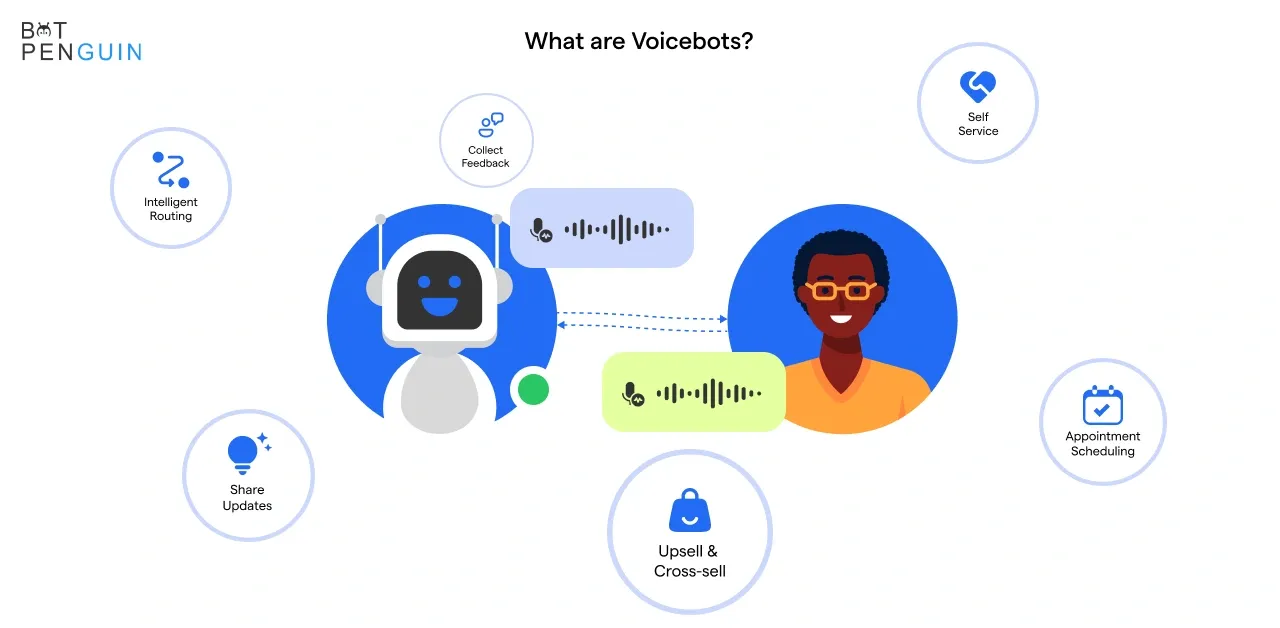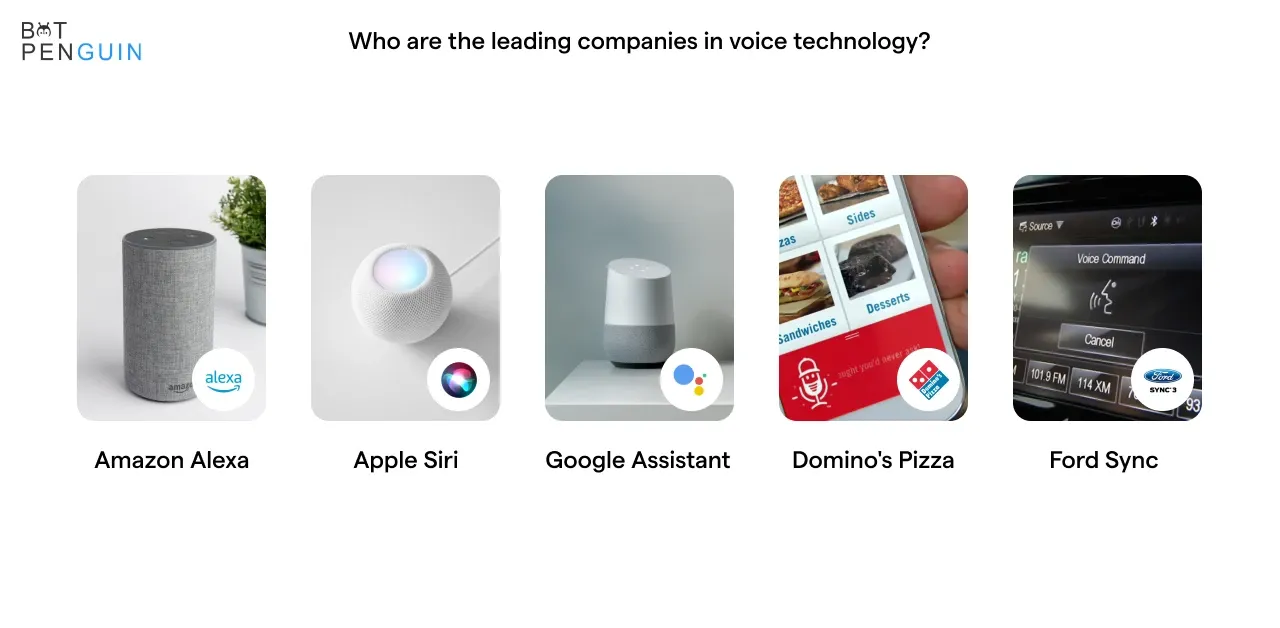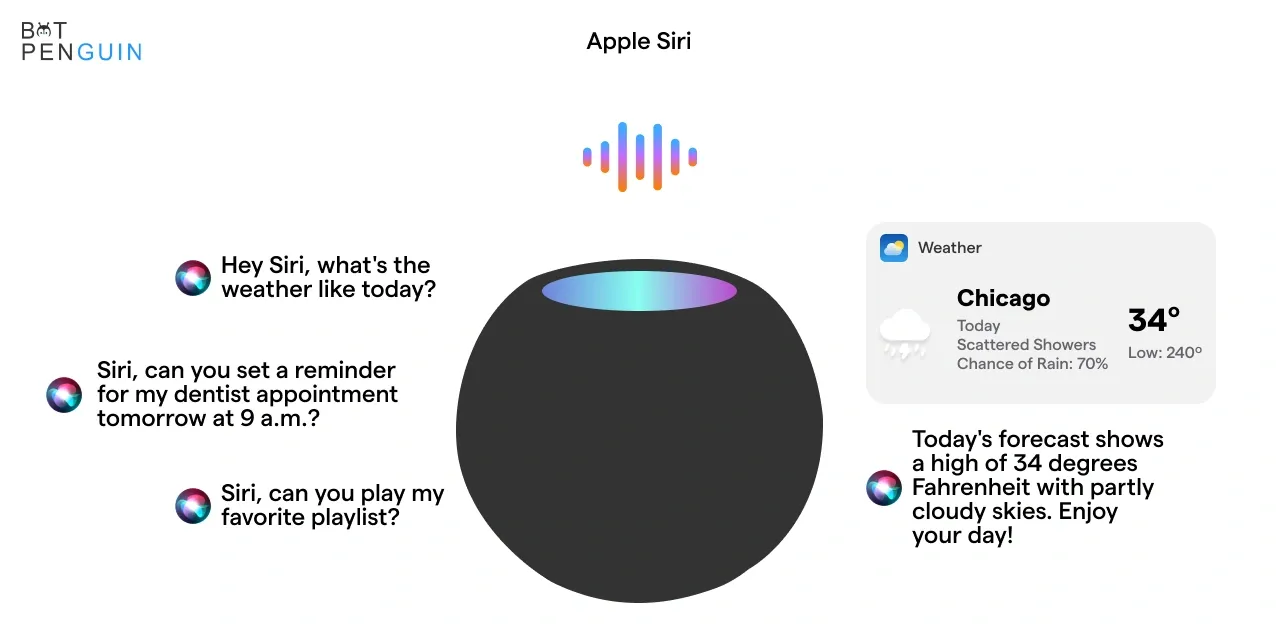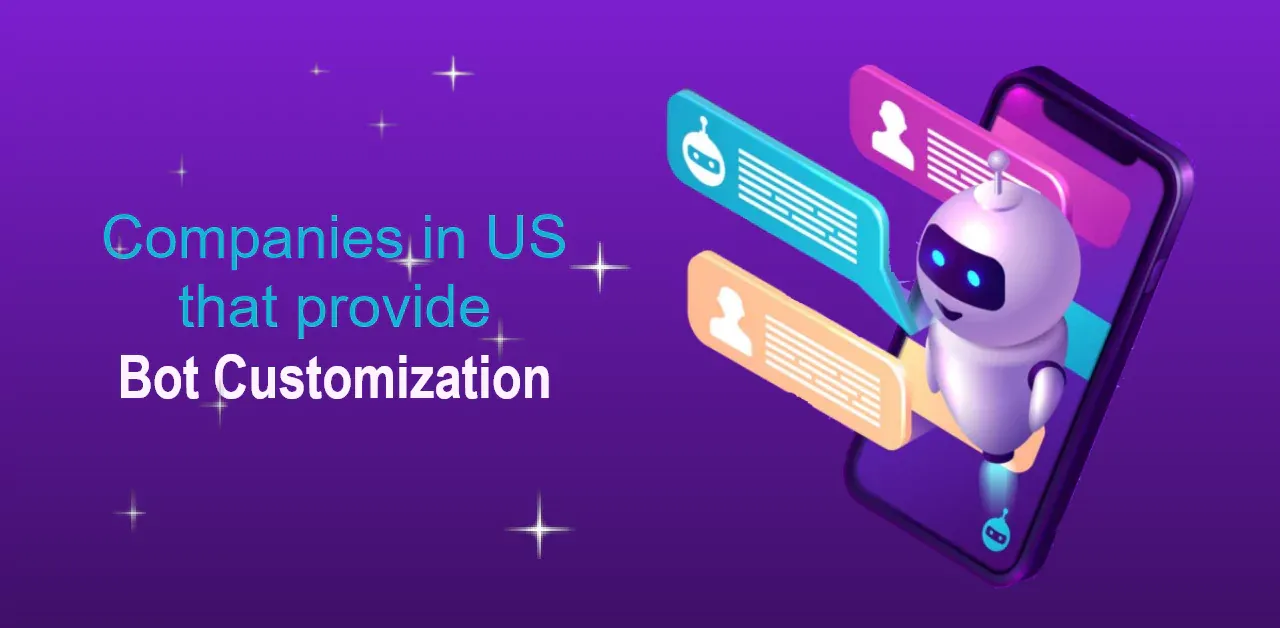Picture this: it's 2024, and voicebots are everywhere. You can't walk down the street without hearing someone chatting away with their personal AI assistant.
It may seem like a scene straight out of a sci-fi movie, but it's quickly becoming a reality.
Recent statistics predict that in 2024 the global voice assistant market will be worth a staggering $7.8 billion. With the rise of voice technology, businesses are starting to take notice.
They are implementing voicebots to improve customer service and streamline operations.
From healthcare to hospitality, voicebots are changing the norm and transforming how we interact with technology. This blog explore real-world examples and best practices for using voicebots in different industries. So sit back, relax, and let's dive into the world of voicebots in action!
What are Voicebots?

Voicebots are virtual assistants that use voice recognition technology to understand and respond to user requests.
They work in a similar way to chatbots, but instead of typing out their requests, users can speak to the voicebot using natural language. Voicebots can be integrated into a variety of devices, including smartphones, smart speakers, and even cars.
Voicebots are becoming increasingly popular due to their convenience and ease of use. They allow users to access information and perform tasks hands-free, making them ideal for situations where manual interaction is not possible or safe.
For example, users can use voicebots to check the weather, play music, set reminders, and even order groceries.
Voicebots use natural language processing (NLP) and machine learning algorithms to understand and respond to user requests. They can learn and improve over time, becoming more accurate and responsive as they are used.
Voicebots can also be programmed to recognize different accents, languages, and speech patterns, making them accessible to a global audience.
Why Do We Use Voicebots?
Well, have you ever been stuck on hold for hours trying to speak to a customer service representative? It's definitely not the most pleasant experience. That's where voicebots come in!
They are AI-powered bots that can converse with customers using voice recognition technology, providing quick and efficient customer service.
In today's fast-paced world, customers expect instant solutions to their problems. Voicebots can provide instant support, reducing wait times and improving customer satisfaction.
They can handle a large volume of customer inquiries simultaneously, freeing up human agents to handle more complex inquiries.
Voicebots are also available 24/7, providing round-the-clock support to customers. This is particularly useful for businesses with customers in different time zones or for those who operate outside of normal business hours.
With voicebots, customers can get help whenever they need it without having to wait for human agents to become available.
Another benefit of voicebots is that they can be programmed to provide personalized experiences to customers. They can recognize individual customers and provide tailored solutions to their problems. This can improve the overall customer experience and increase customer loyalty.
Who are the Leading Companies in Voice Technology?

Voicebots can be integrated into various devices and platforms, including smart speakers, mobile phones, and even cars.
We will look at real-world examples of voicebots in action and explore some best design and implementation practices.
Amazon Alexa
Amazon Alexa is the most well-known voicebot on the market. It is integrated into Amazon's Echo smart speakers line and can be accessed through a mobile app.
Alexa can perform various tasks, including setting alarms, playing music, answering questions, and controlling smart home devices. Users can activate Alexa by saying the wake word "Alexa" followed by a command.
Google Assistant

Google Assistant is Google's voicebot, integrated into various devices, including smart speakers, mobile phones, and smartwatches.
Like Alexa, Google Assistant can perform multiple tasks, such as playing music, setting reminders, and answering questions. Users can activate Google Assistant by saying "Hey Google" or "OK Google," followed by a command.
Ensure the VUI is natural and conversational when designing a Google Assistant action. Use clear and concise language and avoid technical jargon. Consider offering users various options for interacting with the move, such as voice commands, buttons, or a touchscreen interface.
Ford Sync
Ford Sync is a voicebot integrated into Ford's line of cars. It allows drivers to control various vehicle features using voice commands, such as making phone calls, playing music, and adjusting the temperature. Users can activate Ford Sync by pressing a button on the steering wheel and speaking a command.
When designing a voicebot for a car, consider the unique challenges the environment poses. Ensure the VUI is clear and concise, and avoid distracting the driver with unnecessary information. Offer users a limited set of commands that are easy to remember and use.
Apple Siri

Siri is Apple's voicebot, integrated into the company's line of iPhones, iPads, and Mac computers. Siri can perform many of the same tasks as Alexa and Google Assistant, such as setting reminders, playing music, and answering questions. Users can activate Siri by saying “Hey Siri”, followed by a command.
When designing a Siri integration, focus on creating a simple and intuitive VUI that is easy to navigate. Use clear and concise language and avoid ambiguity.
Consider offering users various options for interacting with the integration, such as through voice commands or a touchscreen interface.
Domino's Pizza
Domino's Pizza has created a voicebot that allows customers to place orders using their voice.
The voicebot is integrated into the company's mobile app and can be activated by pressing a button and speaking a command. Customers can choose from various menu options and customize their orders using voice commands.
When designing a voicebot for ordering food, ensure the VUI is easy to use and navigate. Use clear and concise language and provide a voicebot that can handle a variety of customizations and special requests.
Consider offering users a visual interface in addition to the voice interface to help them navigate the menu options.
Use Cases of Voicebots
AI voice chatbots are increasingly used across various industries to enhance customer experience and streamline business operations.
Here are some industry-wise use cases of AI voice chatbots
Voice Bots in Retail
AI voice chatbots can help retailers improve customer experience by providing personalized product recommendations and answering customer queries in real-time.
For example, H&M has developed a voicebot that helps customers find the proper outfit and provides style advice based on customer preferences.
Voice Bots in Healthcare

Voice chatbots can help healthcare providers improve patient care by answering medical queries and providing personalized health advice.
For example, Babylon Health has developed an AI-powered voice chatbot that helps patients assess their symptoms and connects them with healthcare professionals.
Voicebots in Banking
Voice chatbots can help banks improve customer experience by providing personalized financial advice and answering account balances and transaction queries.
For example, Bank of America has developed an AI voice chatbot that helps customers track their spending, make payments, and provide financial advice.
Suggested Reading:
Difference between Chatbots & Voice Bots
Voice Bots in Hospitality
Voice chatbots can help hotels and restaurants improve customer experience by providing personalized recommendations and answering queries related to reservations and amenities.
For example, Marriott has developed an AI voice chatbot that helps guests book rooms, order room service, and provides information about hotel amenities.
Voice Bots in Education

AI voice chatbots can help educational institutions improve student engagement and learning outcomes by providing personalized feedback and assistance.
For example, Carnegie Learning has developed an AI voice chatbot that helps students learn mathematics by providing personalized feedback and guidance.
Voice Bots in Insurance
Voice chatbots can help insurance companies improve customer experience by answering queries related to insurance policies and claims.
For example, Lemonade has developed an AI voice chatbot that allows customers to file insurance claims and provides personalized insurance recommendations.
In summary, AI voice chatbots are used across various industries to enhance customer experience, streamline business operations, and improve efficiency.
By leveraging the power of artificial intelligence, these chatbots can provide personalized recommendations, answer queries in real time, and help businesses improve their bottom line.
What are the Ideal Practices for Implementing a Voice Bot?
- Define clear objectives: Before implementing a voice bot, defining clear objectives and goals is essential. This will help ensure the voice bot is aligned with the business's overall strategy and can help achieve specific outcomes.
- Design a conversational flow: Your conversational flow should feel natural and intuitive. It is critical to creating a successful voice bot. The voice bot should be able to handle a range of queries and provide clear and concise responses.
- Ensure data security and privacy: Voice bots handle sensitive information and personal data, so ensuring that the voice bot is designed for data security and privacy is important. Implementing secure data storage and encryption protocols can help protect user data.
- Provide clear user guidance: Providing clear guidance on interacting with the voice bot can help users understand how to use it effectively. This includes giving clear instructions on how to initiate a conversation and how to ask for specific information.
- Create a user-centric design: Design the voice bot to be user-centric by keeping the user's needs and preferences in mind. Use a simple and intuitive user interface and design natural and engaging conversations.
- Optimize for voice search: Optimize the voice bot for voice search using natural language processing and understanding the user's intent. Use clear and concise language that is easy to understand.
Conclusion
Voicebots are revolutionizing the way we interact with technology. From customer service to personal assistants, voicebots are becoming increasingly popular in various applications.
As technology evolves, voicebots are likely to become even more sophisticated and capable of performing complex tasks.
By providing a seamless and natural interface, voicebots can improve the customer experience, increase efficiency, and reduce costs. They are also accessible to individuals with disabilities, providing a more inclusive and equitable experience for all users.
To ensure the success of voicebots, it is important to follow best practices and design them with the user in mind. It includes using clear and concise language, providing a variety of responses, and offering fallback options when the voicebot cannot provide a solution.
Overall, voicebots offer a powerful tool for businesses and individuals looking to improve their interactions with technology.
By leveraging the latest advancements in AI and natural language processing, voicebots can transform how we live, work, and interact with the world around us.
So why not jump on the bandwagon and experience the benefits of voicebots for yourself?



